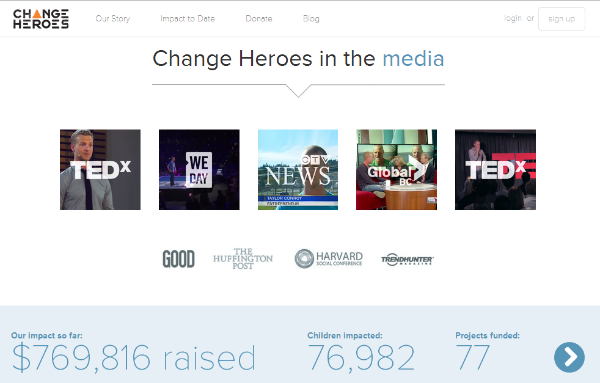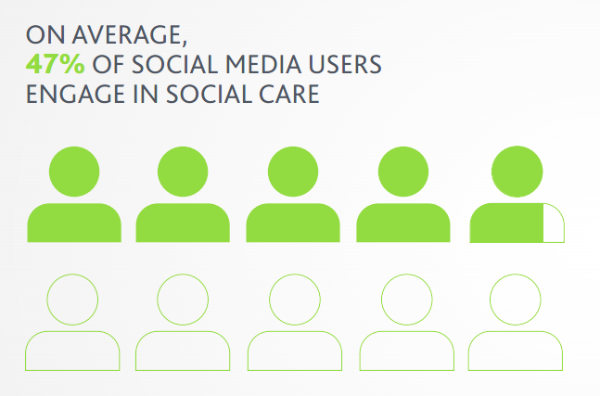We fail at the most obvious thing in our business.
Our customers.
Specifically, keeping them happy when they don’t have problems.
Everyone talks about “delivering great service.” Which is why I cringe bringing this up. Especially since I’m sure many small businesses do.
But what about delivering remarkable service when it’s not a reaction to a problem?
How many of us take the time to deliver proactive customer service?
What Bailey Taught Me About Remarkable Service
My cousin Jessica recently took her dog to the vet. She’s new to Victoria, and didn’t know where to go. We recommended Mckenzie Veterinary Services.
She was overwhelmed.
Not only were they fabulous with Bailey (her 10 year old terrier, who’s doing fine), they phoned several times to check up within 2 weeks of their visit to ensure that she and Bailey were okay. And to answer any additional questions Jessica had.
They gave Bailey a clean bill of health during the visit. And Jessica had paid their bill. So, why did they phone?
To show Jessica that they cared. That she was more to them than just a number. That they were there for her.
The call lasted only several minutes. But it made a huge impact.
What would happen if more businesses did this?
Harris Interactive showed that 87% of people said they want to be proactively contacted by a company. And 62% of people who have a positive experience from proactive calls have “taken an action as a result of that positive experience.”
Clearly, proactive customer care is what we’re looking for.
When Does A Customer Stop Being A Customer?
It’s a trick question.
Never.
After a customer pays their bill and leaves your parking lot or website, they’re still your customer.
You know if you do a good job there’s a better chance they’ll return. And if you do a bad job, there’s a good chance word will spread.
But what do you do to proactively reach out and see how your customers are doing? Do you have a follow up program like McKenzie Vet Services?
A friend of mine at Change Heroes told me they have a full person dedicated to following up customer experiences. Not customer support. But experiences.
Their job is to phone customers and see what it’s like being a Change Heroes customer. What they liked, what they didn’t and everything in between, so Change Heroes can understand how to be better.
Customers are often surprised at the call. And want to share their experience, because it makes them feel valued.
This isn’t a new idea. Making your customers feel valued has been the cornerstone of providing great service for decades.
And this isn’t limited to larger companies. Change Hero’s has a team of less than 10 people.
What’s changed is that more companies are now proactively reaching out, as the tools and the social web make it feasible for smaller businesses to participate in proactive customer care. And customers are more willing to be contacted.
Consumers are open to companies contacting them proactively…
Forward-thinking companies are taking the initiative to create pleasant, positive interactions that improve the way their customers perceive them.
– Paul Jarman, CEO of inContact
And yes, it works.
Entkata found that proactive calling can increase customer retention by 3-5%. And I imagine that will have an even bigger impact on businesses who can translate the content of those calls into positive action.
What’s The Fastest Way To Do This?
That’s probably the wrong question to ask.
Because it shows that you’re not willing to make your customer’s your top priority.
However, in the interest of maximizing time, depending on your business, you can probably set aside one day a month to check in on some of your customers.
If you can, focus on the most profitable ones.
And please, don’t send surveys.
This isn’t about analyzing data. It’s about making a human connection with your customer, showing them you care, that you know their name, that you’re willing to pick up the phone and listen.
That you value them.
That will go further than a survey any day.
Final Thoughts: Proactive Customer Service
Being proactive is essential.
Not surprisingly, more of us are jumping on board. Forrester showed that while only 5% of companies they surveyed offer proactive customer service, 21% plan on launching proactive campaigns in the next 12 months.
But it’s not the full story.
We spend 121.8 billion minutes on social networks every month. This is where your customers want you to help them. According to Nielsen, 47% of social media users already engage in social care.
Executing a social care program is one of the easiest ways to keep customers happy.
And now you can do it in less than 5 minutes a day.
Not sure how?



